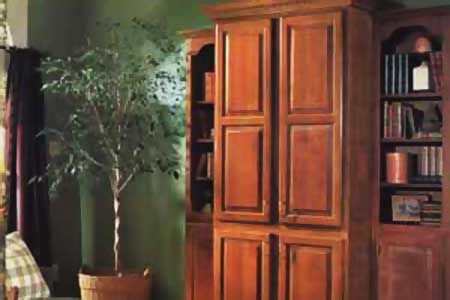We may be compensated if you purchase through links on our website. Our team is committed to delivering honest, objective, and independent reviews on home products and services.
Does your living room look like a warehouse for audio/visual equipment? An entertainment center will house your television, gaming consoles, and audio equipment in one space-saving place. In this guide, we’ll walk you through the step-by-step process of how to build a custom entertainment center using stock cabinets, from planning to choosing the right materials and various customization options.
Planning Your Custom Entertainment Center
Having a plan for your custom entertainment center ensures that the final product meets your needs and fits into your living space. Follow these steps when planning your entertainment center:
- Assess your space. Start by measuring the area where you intend to place your entertainment center. Consider the height, width, and depth of the space, as well as any architectural features that may impact the design. Be sure to account for proper ventilation for electronic components and check that the unit won’t obstruct walkways or doors.
- Determine your needs. Think about how you’ll use the entertainment center. Consider the size of your television, the number of components you need to house, and the amount of storage required for media and other items. Make a list of must-have features to guide your design process.
- Sketch your plan. Before you start building, create a rough sketch of your entertainment center. This can help you visualize the layout and ensure you don’t overlook any details. Use graph paper to draw your plan to scale.
- Create a detailed diagram. After finalizing your sketch, create a more detailed diagram with precise measurements. Include the dimensions for each component, such as the cabinets, shelves, and any custom features.
Types of Wood for Your Custom Entertainment Center
Common wood options for entertainment centers include oak, pine, maple, and cherry. Each type offers unique characteristics in terms of grain pattern, color, and durability. Consider factors such as your budget, desired aesthetic, and the overall style of your home when making your selection.
- Cherry: This hardwood darkens over time, adding a rich, warm tone to your entertainment center.
- Maple: With a smooth grain and light color, maple provides a sleek, modern look suitable for various decor styles.
- Oak: Known for its strength and durability, oak has a distinctive grain pattern that adds character to any piece.
- Pine: A more affordable option, pine is lightweight and easy to work with, making it ideal for beginners.
Entertainment Center Hardware Options
Choose sturdy hinges, drawer slides, and handles that complement your design. Consider soft-close mechanisms for doors and drawers to protect your equipment and full-extension slides that allow easy access to the entire drawer. Pay attention to the finish of the hardware to ensure it matches the overall aesthetic of your piece.
Tools Needed
 Drill/driver
Drill/driver Circular saw
Circular saw Hammer
Hammer Finish nailer
Finish nailer Tape measure
Tape measure Level
Level Clamps
Clamps Thin pry bar
Thin pry bar Stud finder
Stud finder
Here’s a list of essential tools you’ll need for this project.
- 1 1/2-inch finishing nails
- 2 1/2-inch screws
- 2x4s
- 3-inch drywall screws
- 3/4 x 1-inch wood strips
- 3/4-inch plywood panel
- Baseboard molding
- Circular saw
- Clamps
- Contact cement
- Drill/driver
- Finish nailer
- Hammer
- Hardware (hinges, drawer slides, metal tracks, handles)
- Level
- Plywood skins
- plywood strips
- Prefinished crown molding
- Safety equipment (gloves, goggles, hearing protection)
- Stud finder
- Tape measure
How To Build a Custom Entertainment Center
Now that you’ve planned your design and gathered your materials and tools, it’s time to start building your custom entertainment center.
Step 1: Install the Toekick
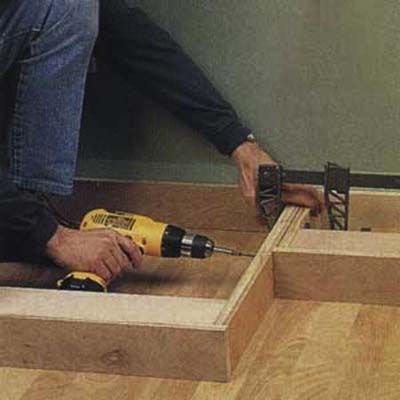
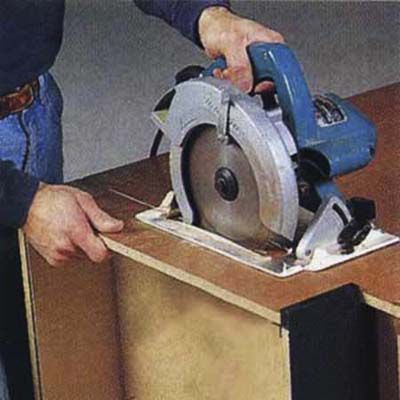
Begin by creating a stable base for your entertainment center.
- Fasten the platform pieces together using 3-inch drywall screws.
- Remove the baseboard molding from the wall where the unit will be placed.
- Construct a 3 1/2-inch-high platform (toekick) using 2x4s.
Step 2: Set Up the Main Cabinet
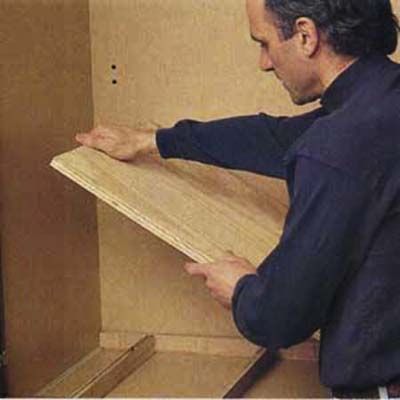

The main cabinet will house your television and serve as the centerpiece of your entertainment center.
- Remove the toekick from the bottom of a large utility cabinet.
- Flip the cabinet upside down to position the larger compartment on top for the TV.
- Place the cabinet on the center of the platform.
- Build up the shelf height to make sliding in the TV easier by adding plywood strips and a 3/4-inch plywood panel.
- Install prefinished plywood skins on the interior surfaces using contact cement.
Step 3: Add Bookcases and Shelving

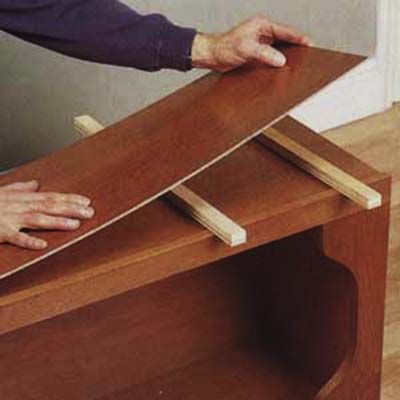
Flanking bookcases and shelving units provide additional storage and balance to your entertainment center.
- Clamp a bookcase unit to a wall cabinet and join them with 2 1/2-inch screws through the face frames.
- Apply plywood skins across both cabinets using contact cement.
- Repeat for the other bookcase unit.
- Place the assembled bookcase units on the platform and secure them to the middle TV cabinet.
- Screw the bottom of each base cabinet into the platform for stability.
Step 4: Apply Finishing Touches
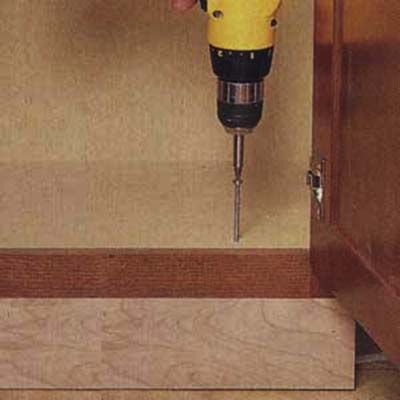
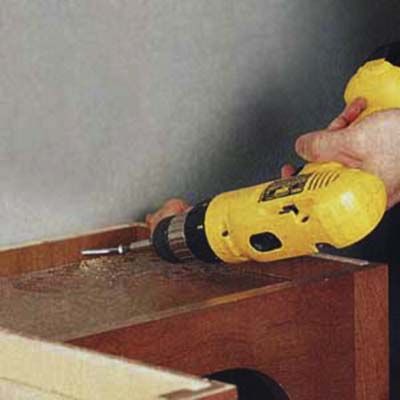
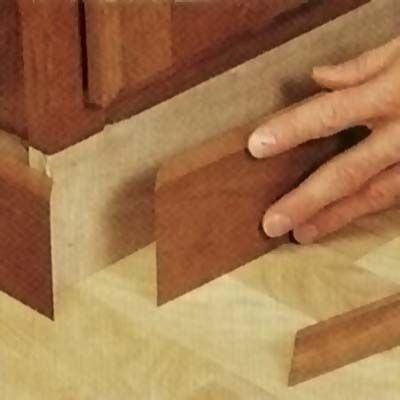
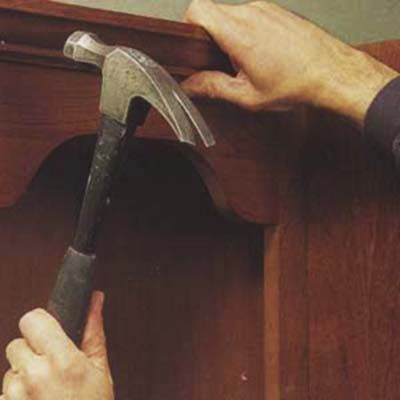
Complete your entertainment center with these final steps:
- Drive 3-inch screws through the top rear of each cabinet into wall studs for added stability.
- Install specialty hardware, such as metal tracks for rollout shelves.
- Conceal the exposed platform with baseboard molding.
- Install prefinished crown molding to the tops of the cabinets using 3/4 x 1-inch wood strips and 1 1/2-inch finishing nails.
- Cut and fit the old baseboard molding along the wall.
Step 5: Install Doors and Drawers
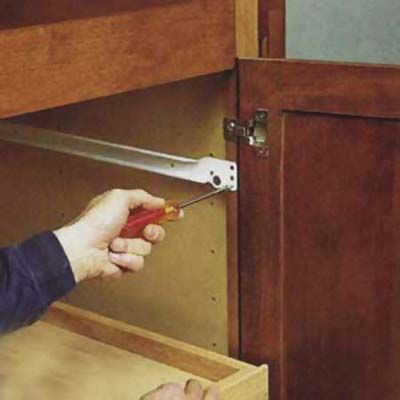
Carefully measure and align each component before installation.
- Attach the hinges to the doors and then fix the doors to the cabinets.
- Install the drawer slides inside the cabinets, ensuring they are level and aligned.
- Slide the drawers into place and test for smooth operation.
Customizing Your Entertainment Center
You have several options when it comes to personalizing your entertainment center, including the following:
- Built-in lighting: Incorporate lighting to highlight your media collection or create ambiance. Consider installing LED strip lights for shelves or cabinet interiors or installing puck lights to showcase decorative items.
- Cable management solutions: Keep your entertainment center tidy by implementing effective cable management. Use cord covers, cable ties, or built-in channels to route wires neatly behind the unit. Consider installing power strips or outlets within cabinets to minimize visible cords.
- Decorative elements: Consider decorative elements such as trim, molding, or custom paint finishes. These details can help your unit blend seamlessly with your existing decor and add a touch of elegance.
Our Conclusion
Building a custom entertainment center using stock cabinets can help keep your space organized while giving it a custom look. While this project may be achievable for many do-it-yourself enthusiasts, it requires careful attention to detail and some woodworking skills. If you’re unsure about any aspect of the build, don’t hesitate to consult with a professional or consider hiring an experienced carpenter.
